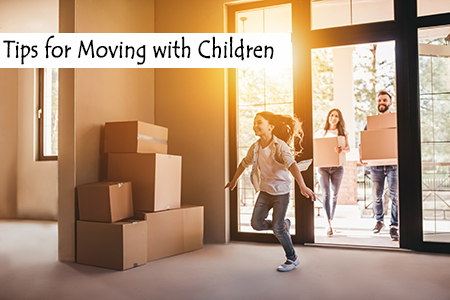 It’s not a secret that moving house can be a true challenge and a serious test for everyone involved in the move.
It’s not a secret that moving house can be a true challenge and a serious test for everyone involved in the move.
And when that move involves children, then you can expect those relocation challenges to increase in number and become more serious.
A house move often proves to be disruptive for the natural flow of things within a family, and for children, it can be even traumatic. One thing is clear – children will need extra cares and special attention during that transitional period.
So, to help you manage your move-related stress levels, to keep your sanity and to keep your children safe and happy throughout the move, here are the top 10 tips for moving with children across the country.
1. Discuss the move with your children
When moving house with children, one of the very first things you should do is discuss the upcoming house move, and all the changes that are coming with it, with your kids. It’s important that you do this without delay – that is, as soon as the move becomes just a matter of time.
Not telling your kids about the move until the last minute is clearly a mistake because your young ones will need time to process the inevitable transition from their current lifestyle to the new one. As a rule of thumb, kids will need enough time to rationalize the huge change that’s coming their way, so it’s your duty as parents to give them as much time in advance as possible.
Naturally, once you inform your kids that you’re moving, they will have tons of questions about that future change. So, arm yourselves with patience and do your best to answer their questions fully and honestly – keep in mind that withholding important details from them will most likely backfire on your after the move is over.
2. Ease your children’s biggest fears and worries
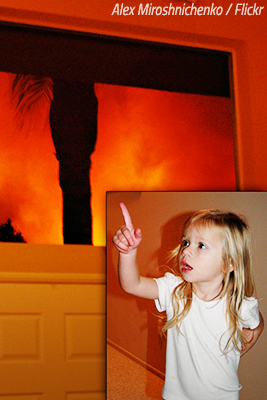
“I’m not packing that box until you tell me what’s really going on here!”
Sometimes moving with children can be rather challenging, especially if you’re not sure how to help your children cope with the anxiety that comes with a house move. Unless your children are very young, you can’t just tell them that you’re taking them away from their friends and school and everything else they’ve known for years, and expect them to accept that life change with smiles on their faces.
Depending on their respective age, your children will have different fears and worries when it comes to moving to another home. Babies will not usually be affected by the house move as they will be too young to understand what’s really going on. Toddlers may get stressed out and their biggest fears will be the fear of being left behind.
For school-age kids and teens, changing schools and moving away from their friends, which automatically implies having to make new friends in the destination town or city, will be the biggest worries. Address those grounded fears promptly and try to ease them in the best possible way. One good way to do just that is to focus on all the positive aspects of moving – all the things your children will gain and win as a direct result of the house move.
20 Tips for moving into a new house
3. Make an effort to keep your kids’ routine unchanged
The thing to remember here is that, as a rule, children thrive on routine and familiarity. They tend to find comfort in the well-established surroundings and the way things have been done before the moving preparations. And now, when they see those cardboard boxes scattered around the home and feel the palpable tension in the air, your kids may get really anxious and fearful of what that big change will mean for them.
The house moving process is all about change, and as Moving day approaches, things will tend to get more and more chaotic. One of your priorities as parents is to do your best to maintain a consistent routine for your children – before, during, and after the move. Consider asking a relative to help you out so that you can maintain that comforting routine for your kids.
Also, try hard to keep a positive attitude about the upcoming move. During highly transitional times, the parents’ moods and attitudes will definitely affect their children as well since the little ones will be looking for reassurance and support.
10 Things you should know about interstate movers
4. Have your kids help with the move
Moving with children to another home is all about making the right decisions when the right time comes.
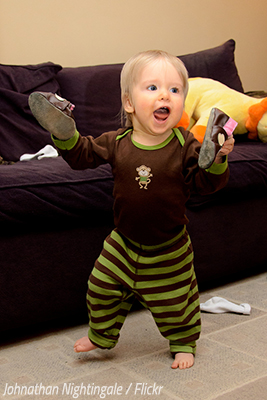
“Where should I pack these?”
If your children are old enough, you should definitely get them involved in the moving process by asking them to help you out with whatever they can. This way, they will feel that they are part of the family’s team and know that they are contributing to the success of the entire relocation operation. Besides, you can definitely use their help with the overwhelming number of move-related tasks.
So, how do you keep your children involved in the move?
- Ask them to sort out their things and decide what items to keep and what items not to keep. They’ll probably need your help with some of those decisions. Also, make sure you explain to your kids the idea of donation.
- Encourage your children to pack their own things – the ones they’ll be taking with them. You can pack a few boxes together to show them how it’s done, then leave them to try on their own.
- Urge your kids to label the packed boxes, and even decorate them any way they want. That task should get them a bit excited, at least for a little while.
How much does it cost to hire movers?
5. Initiate the school transfer procedure
When moving house with school-age children, one of your major concerns will be the school transfer process. That’s right, after moving to the destination town or city, your kids will need to resume their education at another school. And that’s exactly why you’ll have to find that new school that will be the perfect fit for your loved ones.
- Identify what your children need and take into account their abilities and interests before deciding on a specific school in the new area. The good news is that you should be able to have a number of good choices.
- Browse through reputable online school resources to help you find the most suitable school for your kids. The National Center for Education Statistics (NCES) offers detailed statistical information about all schools and colleges in the country. Also, check out GreatSchools.org – a non-profit organization that has useful information about the schools you will be interested in.
- Arrange the transfer of school records between the two schools. To register your children at another school, you’ll need to obtain the following documents prior to the move: copies of report cards and transcripts, copies of completed exams and scores, copies of recommendation letters from teachers, and a list of any awards or achievements.
MOVING CHECKLIST: Interactive moving timeline
6. Pack essentials boxes for your kids
Without a doubt, moving with children across the country can be a challenge. However, you can still make things easier for everybody by thinking a few steps ahead and anticipating possible problems before they happen.

“Oops! I think Mom just missed this from the packing checklist.”
One way to be prepared for that transitional period is to pack essentials boxes for each of your kids. Those survival kits will be extremely useful not only while you’re on the road between the two homes, but also right after you move into the new house or apartment and your household items are not yet delivered by your mover.
Depending on the concrete age of your children, the essentials inside those Open-First boxes can vary greatly. When moving with a baby or a toddler, the essentials box should include diapers (always take more than you think you need), wet wipes, baby food and drinks, an extra set of clothes, and baby toys.
When moving with school-age kids, their essentials boxes should include high-tech gadgets such as a music player, a tablet, or a portable game console. Of course, the smartphone won’t leave your kids’ hands anyway. Remember to always include a change of clothes and any prescription medicines, if necessary.
How to pack an essentials box when moving
7. Get help if things seem to be getting out of hand
Moving with children to a new city may turn out to be much tougher than you thought in the beginning. Some things may not go according to plan and there may be further complications are you’re getting ready to move out.
Assess carefully the relocation situation and don’t hesitate to ask people you can trust to help you out during that difficult moment in life.
- FRIENDS. Ask some of your good friends to come help you pack and move your things so that you can fit into your packing and moving schedule. Friendly help should always be welcome, especially when you’re having your hands full with your kids around.
Just make sure you reach out to your friends as early as possible to minimize the disruption of their own plans. - MOVERS. Do the sensible thing and hire professional movers to help you pack and move your large furniture and heavy cardboard boxes. This way, you’ll be paying professionals so that you get more free time to spend with and prepare your little angels for the big changes ahead. Also, having experienced packers and movers by your side will contribute to a safe move where your children will be safe and protected at all times.
How to get friends to help you move
8. Keep your children safe on Moving day
As just mentioned, hiring experienced movers will contribute greatly to your children’s safety on the day of the move. By picking up a good mover, you’ll also be paying them for peace of mind – something that is extremely important for parents when moving with kids across the country.
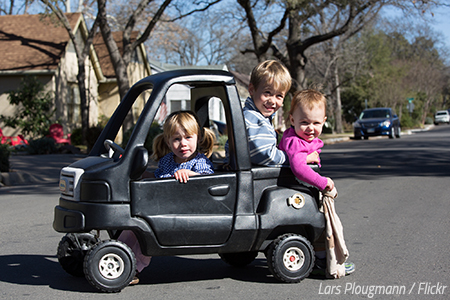
“On the road again…”
Still, moving day can be rather dangerous so you’ll have to take a few extra precautionary measures to keep things accident-free on the day of the move. Ask a trustworthy friend or a relative to look after your kids in a room that’s located far from the moving traffic. This way, you’ll know that your little angels are 100% safe and looked after while you concentrate on various tasks and jobs on the Big day.
Remember that no children, especially younger ones, should be allowed near the action-packed epicenter on Moving day. If you happen to be moving on your own and your children are old enough to be helping you out, then you can surely use their assistance. However, be very careful about how you distribute the moving tasks as your kids’ safety still remains your number one priority.
How to survive Moving day in 20 steps
9. Child-proof the new home right after the move
Moving house with children, especially young children, means you’ll have to think things through really well each step of the way. And that, of course, includes the immediate post-move period when all your family members find themselves in the new residence.
One extremely important task for your right after you move into the new home is to child-proof that place. The reason for that urgency is that you still don’t know well that house or apartment, so it may be hiding some unexpected dangers for your young children. And to play it safe, you’ll just need to identify those hazards and eliminate them on the spot.
Complete the child-proofing (or baby-proofing) job by going from room to room looking for those possible dangers and hidden threats. To be more effective, get down on your knees in order to see the home from your young children’s points of view.
Start child-proofing from the nursery room – the place in which your kids will spend most of their time. Remove any stuffed animals or other toys from the beds, then position thick blankets on the floor by those beds. Place electrical outlet protectors to protect your children against accidental electric shocks.
Continue child-proofing the entire home by paying special attention to the bathroom, the kitchen, and the staircases – those are the rooms where most child-related accidents occur.
10 Super-important things to do after moving
10. Help your children adapt to the new environment
Moving to a new and unfamiliar place will be hard for each family member but for some children that adjustment period may prove to last longer and to be more problematic. Luckily, there are several ways you, as caring parents, can help your children cope with moving anxiety.
-
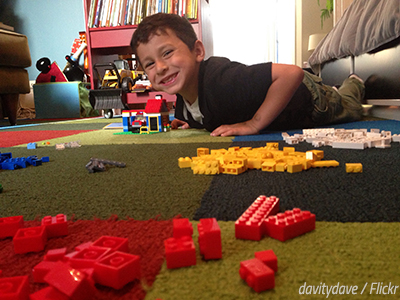
“Mom, Dad, this new house is SO COOL!”
Have your children arrange and decorate their own rooms.
- Make sure you’ve picked the right school for your school-age kids and be extra vigilant during the first school weeks and months for any signs of trouble.
- Encourage your children to take part in fun and useful extracurricular activities – sports, music, arts, dancing, and so on. Those extra activities will help them find new friends faster and will keep their minds occupied, that is away from sad and nostalgic thoughts.
- Help your kids to make new friends but encourage them to keep in touch with their old ones so that they breeze through that post-move adaptation period.
- Be patient and let your children process the huge change on their own terms. Provide your priceless support and guide them through the adjustment period but don’t push them too hard.
- Have frequent talks with your children in order to have a better chance of picking up and identifying any early signs of trouble. Seek professional help if you do notice any troubling issues with your loved ones.

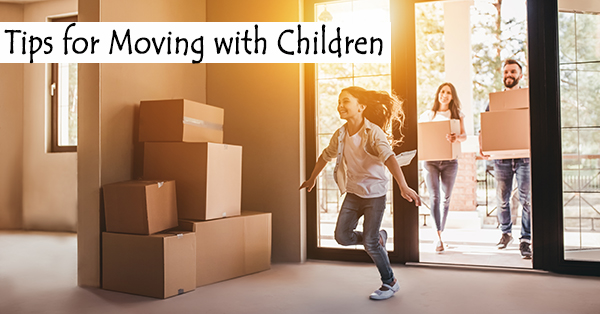




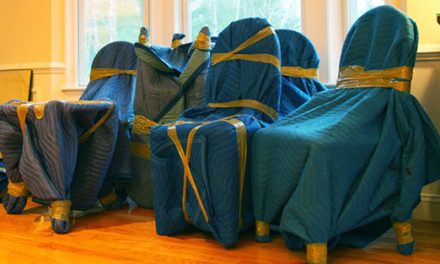



Thank you for posting important information because in today’s world no one has time to tell tips for movers
I like the points you noted (Discuss the move with your children) it’s very important because children also knew about what is moving and so many things they known in a teen or early age…
thank you.